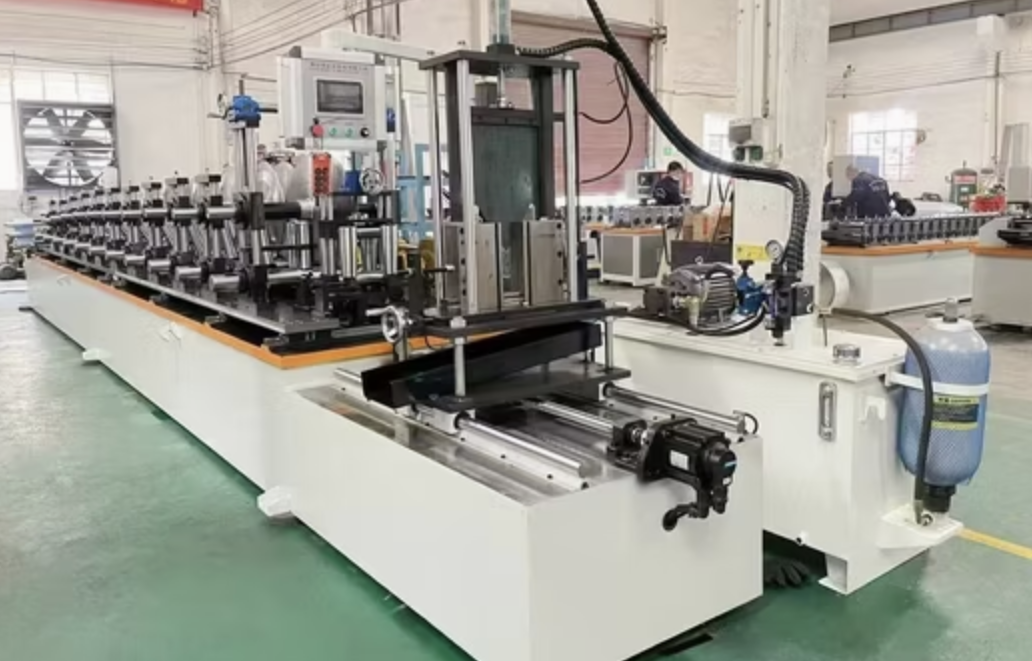
Posted on Saturday, November 2, 2024
In Colombia, roll forming machines are gaining popularity across various industries for their efficiency, precision, and versatility. For manufacturers looking to expand their operations or upgrade equipment, understanding the capabilities and benefits of roll forming machines is essential. This guide provides an in-depth look at roll forming machine applications, features to consider, and special considerations for Colombian buyers.
Applications and Benefits
Roll forming machines shape flat metal sheets into continuous, uniform profiles by feeding the material through a series of rollers. The roll forming process is known for its efficiency and ability to create complex shapes without compromising material integrity. Here are some key benefits:
Industries in Colombia Using Roll Forming Machines
In Colombia, the following sectors benefit most from roll forming technology:
Roll forming machines streamline production for these industries, helping Colombian manufacturers meet growing demand with quality products.
Investing in a roll forming machine is a significant decision. Here are the essential features to consider to ensure the machine meets your operational needs and local requirements.
1. Profile Specifications
2. Power Supply and Electrical Compatibility
3. Machine Durability and Frame Quality
4. Automation and Control Systems
5. Maintenance and Local Support
6. Optional Extras to Enhance Efficiency
Shipping and Installation
Transporting large equipment like roll forming machines requires careful planning, especially for international purchases. Shipping costs and logistical considerations may vary, so it’s wise to budget for these additional expenses. Furthermore, many suppliers offer on-site installation and training services, which can be beneficial in ensuring that your team operates the machine efficiently and safely.
Regulatory Compliance
It’s crucial to ensure that any equipment imported into Colombia meets local regulatory and safety standards. This includes adhering to industry-specific certifications and safety guidelines to avoid penalties or operational disruptions.
Total Cost of Ownership
While the initial cost of a roll forming machine is an important factor, it’s equally vital to assess the total cost of ownership over time. Consider factors like energy consumption, maintenance costs, and the availability of financing options for Colombian manufacturers. Some financing programs may offer better terms to support local industry growth, which can make the purchase more accessible.
For Colombian manufacturers, roll forming machines offer a powerful solution to meet the demands of industries like construction, automotive, and energy. By understanding the machine’s applications, assessing key features like material compatibility and electrical standards, and considering factors unique to Colombia, manufacturers can make informed decisions that enhance productivity and ensure long-term success.
With the right machine and a well-prepared team, Colombian businesses can capitalize on the efficiency and precision of roll forming technology to produce high-quality, consistent products that stand out in the market.

Understanding Coil IDs, Mandrel Sizing, and Shear Pin Safety in Uncoilers
Posted on Wednesday, October 1, 2025
Mismatched sizes can lead to machine damage, downtime, and safety hazards — often evidenced by a shear pin failure.

How Coil Tensile Strength Affects Roll Forming and How to Adjust Your Machine
Posted on Wednesday, October 1, 2025
Changes in tensile strength can significantly affect the finished profile, causing misaligned bends, uneven edges, and out-of-spec parts.

Why Paint Cracks on an Embossing Line Running Pre-Painted Coil and How to Prevent It
Posted on Wednesday, October 1, 2025
This issue not only affects the visual quality of the product but can also lead to increased scrap rates and customer complaints.

The Most Popular Standing Seam Metal Roof Panels in the U.S. — A Comprehensive Guide
Posted on Monday, September 29, 2025
In this post, we’ll explore what panel styles and sizes are most popular in the U.S